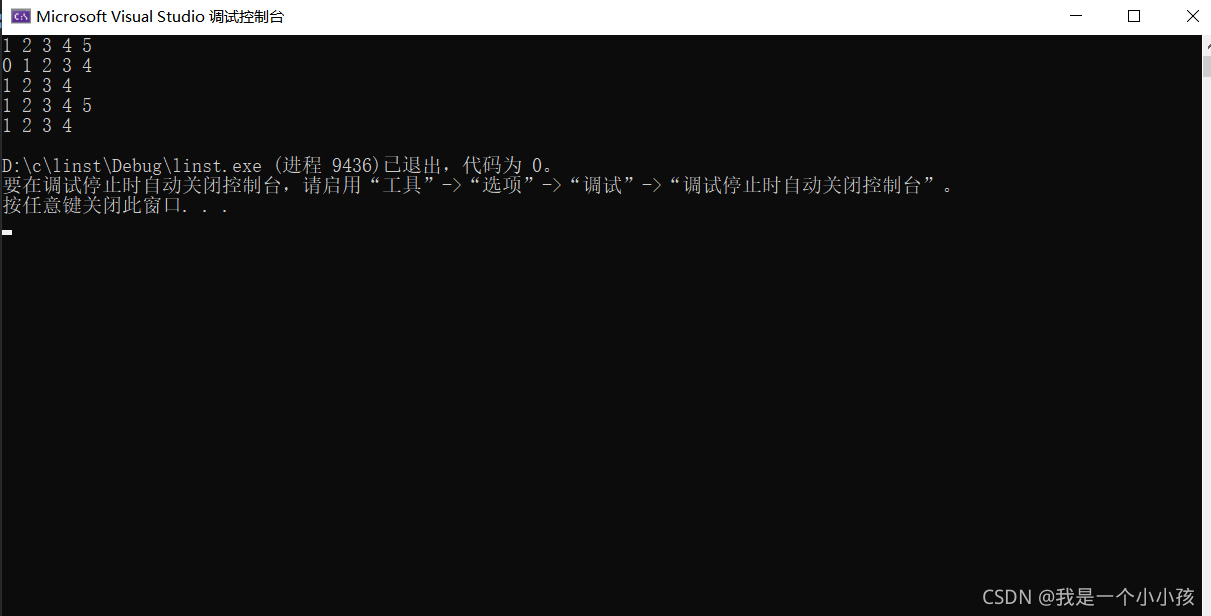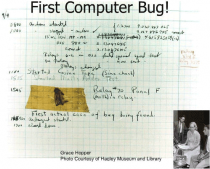1.首先简单了解一下链表的概念:

要注意的是链表是一个结构体实现的一种线性表,它只能从前往后,不可以从后往前(因为next只保存下一个节点的地址).在实现单链表的操作时,需要用指针来操作.很简单,注释写的很详细,欢迎大家指正哈哈哈哈~之前写的太烂了重新写了一下.....
2.代码展示:
|
1
2
3
4
5
6
7
8
9
10
11
12
13
14
15
16
17
18
19
20
21
22
23
24
25
26
27
28
29
30
31
32
33
34
35
36
37
38
39
40
41
42
43
44
45
46
47
48
49
50
51
52
53
54
55
56
57
58
59
60
61
62
63
64
65
66
67
68
69
70
71
72
73
74
75
76
77
78
79
80
81
82
83
84
85
86
87
88
89
90
91
92
93
94
95
96
97
98
99
100
101
102
103
104
105
106
107
108
109
110
111
112
113
114
115
116
117
118
119
120
121
122
123
124
125
126
127
128
129
130
131
132
133
134
135
136
137
138
139
140
141
142
143
144
145
146
147
148
149
150
151
152
153
154
155
156
157
158
159
160
161
162
163
164
165
166
167
168
169
170
171
172
173
174
175
176
177
178
179
180
181
|
#include <stdio.h>#include <assert.h>#include <stdlib.h>typedef struct linklist { int data; struct linklist* next;}node;//目录//1.动态申请节点node* Creatnode(int x);//2.单链表的尾插void PushBack(node** plist, int x);//3.单链表的打印void Printlist(node** plist);//4.单链表尾删void Popback(node** plist);//5.单链表的头插void PushFront(node** plist, int x);//6.单链表的头删void PopFrount(node** plist);//7.单链表的查找node* Findpos(node* plist, int x);//8.单链表在pos位置之后插入xvoid Insertlinstafter(node* pos, int x);//9.单链表删除pos位置之后的元素void PopPosAfter(node* pos);//10.单链表的销毁void Destorylist(node** plist);//1.动态申请节点node* Creatnode(int x) { node* t = (node*)malloc(sizeof(node)); if (t == NULL) { assert(0); return NULL; } else { t->next = NULL; t->data = x; return t; }}//2.单链表的尾插void PushBack(node** plist, int x) { assert(plist); if (*plist == NULL) { *plist = Creatnode(x); } else { node* p = *plist; while (p->next) { p = p->next; } p->next = Creatnode(x); }}//3.单链表的打印void Printlist(node** plist) { assert(plist); node* p =* plist; while (p) { printf("%d ", p->data); p = p->next; }}//4.单链表尾删void Popback(node** plist) { assert(plist); if (*plist == NULL) { return NULL; } node* p = *plist; node* q = NULL; while (p->next) { q = p; p = p->next; } q->next =NULL; free(p);}//5.单链表的头插void PushFront(node** plist, int x) { assert(plist); node* t = Creatnode(x); if (NULL == *plist) { *plist = t; } else { t->next = *plist; *plist = t; }}//6.单链表的头删void PopFrount(node** plist) { assert(plist); if (plist == NULL) { return NULL; } else { node* p = *plist; *plist = p->next; free(p); }}//7.单链表的查找node* Findpos(node* plist, int x) { node* cur = plist; while (cur) { if (cur->data == x) { return cur; } cur = cur->next; } return NULL;}//8.单链表在pos位置之后插入xvoid Insertlinstafter(node* pos, int x) { assert(pos); if (NULL == pos) { return ; } node* t = Creatnode(x); t->next = pos->next; pos->next = t;}//9.单链表删除pos位置之后的元素void PopPosAfter(node* pos) { assert(pos); if (pos->next == NULL) { return; } else{ node* p = pos->next; pos->next = p->next; free(p); }}//10.单链表的销毁void Destorylist(node** plist) { assert(plist); node* p = *plist; while (p) { *plist = p->next; free(p); p = *plist; } *plist = NULL;} void test1() { node* plist=NULL;//创建头指针 PushBack(&plist, 1);//尾插元素 PushBack(&plist, 2); PushBack(&plist, 3); PushBack(&plist, 4); PushBack(&plist, 5); Printlist(&plist);//打印链表元素 1 2 3 4 5 printf("\n"); Popback(&plist); //尾删元素 PushFront(&plist, 0);//首插元素0 Printlist(&plist);//打印链表 0 1 2 3 4 printf("\n"); PopFrount(&plist);//首删元素0 Printlist(&plist);//打印链表 1 2 3 4 printf("\n"); Findpos(plist,1);//寻找链表中1的地址,不方便演示,下面会演示 Insertlinstafter(Findpos(plist, 4), 5);//在4后面插入5,用到上面的Findpos函数 Printlist(&plist);//打印链表 1 2 3 4 5 printf("\n"); PopPosAfter(Findpos(plist, 4));//删除指定位置后面的元素(删除4后面的5) Printlist(&plist);//打印链表 1 2 3 4 printf("\n"); Destorylist(&plist);//销毁链表 Printlist(&plist);//打印链表}void test() { test1();}int main() { test(); return 0;} |
3.测试结果:
a.先创建了头指针plist
b.尾插1 2 3 4 5
c. 尾删元素5
d.首插元素0
e.首删元素0
f.在元素4 后面插入5
g.删除4元素后面的5
h.销毁链表

到此这篇关于C语言实现单链表的基本功能详解的文章就介绍到这了,更多相关单链表基本功能内容请搜索服务器之家以前的文章或继续浏览下面的相关文章希望大家以后多多支持服务器之家!
原文链接:https://blog.csdn.net/weixin_62029250/article/details/121483573
















